Call Blaster used during field research
These are photos of two of the call blasters that we use in the field. The larger unit consists of a 200W Car stereo, a 4.5AH-12V battery, 2 Power Horn speakers from Radio Shack, a built in battery charge tester and a 200 watt equalizer/amp. This unit has been wired to run on either the battery or via a car cigarette lighter. In addition, the cigarette connector is used to charge the battery when not in use. The unit has been fitted with straps such that it can be backpacked into an area if desired. Most of the time it is used in close association with a vehicle as the unit is fairly heavy so carrying it distances of more than a half mile is seldom attempted. In the field we have verified that we can push a call out to 2 miles or more depending on terrain, air temperature and competing noise sources. We recently completed the process of building a light weight blaster which was field tested in early June. You can check out the pictures of this new unit at the bottom of the page.
Several calls of proposed Sasquatches including the Ohio Howl, Tahoe Scream and Washington Howl are available off the internet and are commonly used by researchers. We use a mixture of calls some from the internet and some that we have recorded ourselves. We have tried a variety of call techniques including using varied volume levels, varied call sequencing and spacing durations. We have even employed more than one blaster to attempt to bait something to join a conversation. Not all research locations lend themselves to broadcasting calls so we don't always use these and when we do we don't always get responses.
Certainly if you do choose to broadcast calls you are announcing your presence in the area so are giving up any stealth advantage you might have had, on the other hand responses have been illicited via this technique in the past by various research groups around the country. Our experience has been that broadcasting calls does not seem to drive these creatures from a research area, if anything it may make them more curious about what has entered their territory. We submit our audio recordings as evidence, all have been captured in areas where calls were used on the night(s) in question.
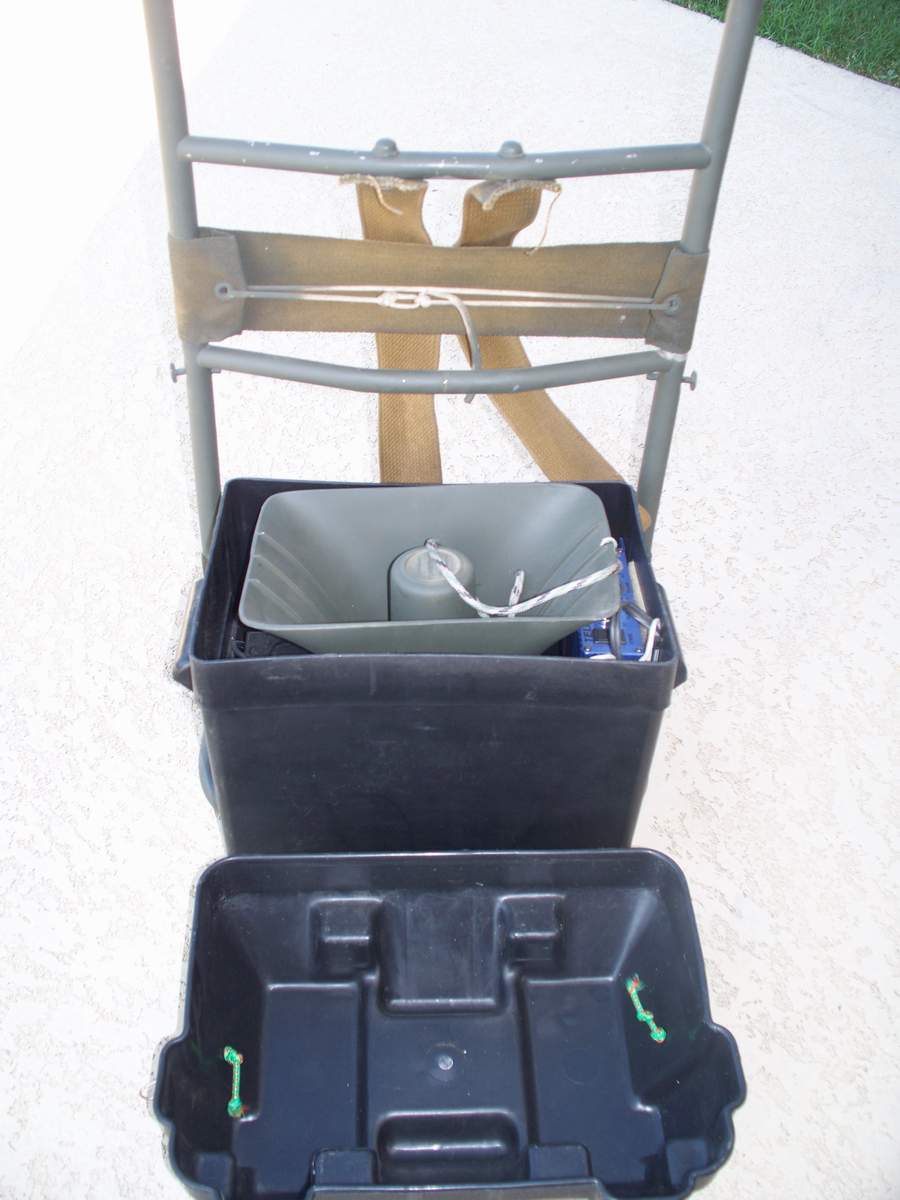
The light weight blaster, housed in a plastic marine battery box which is attached to a backpack frame.
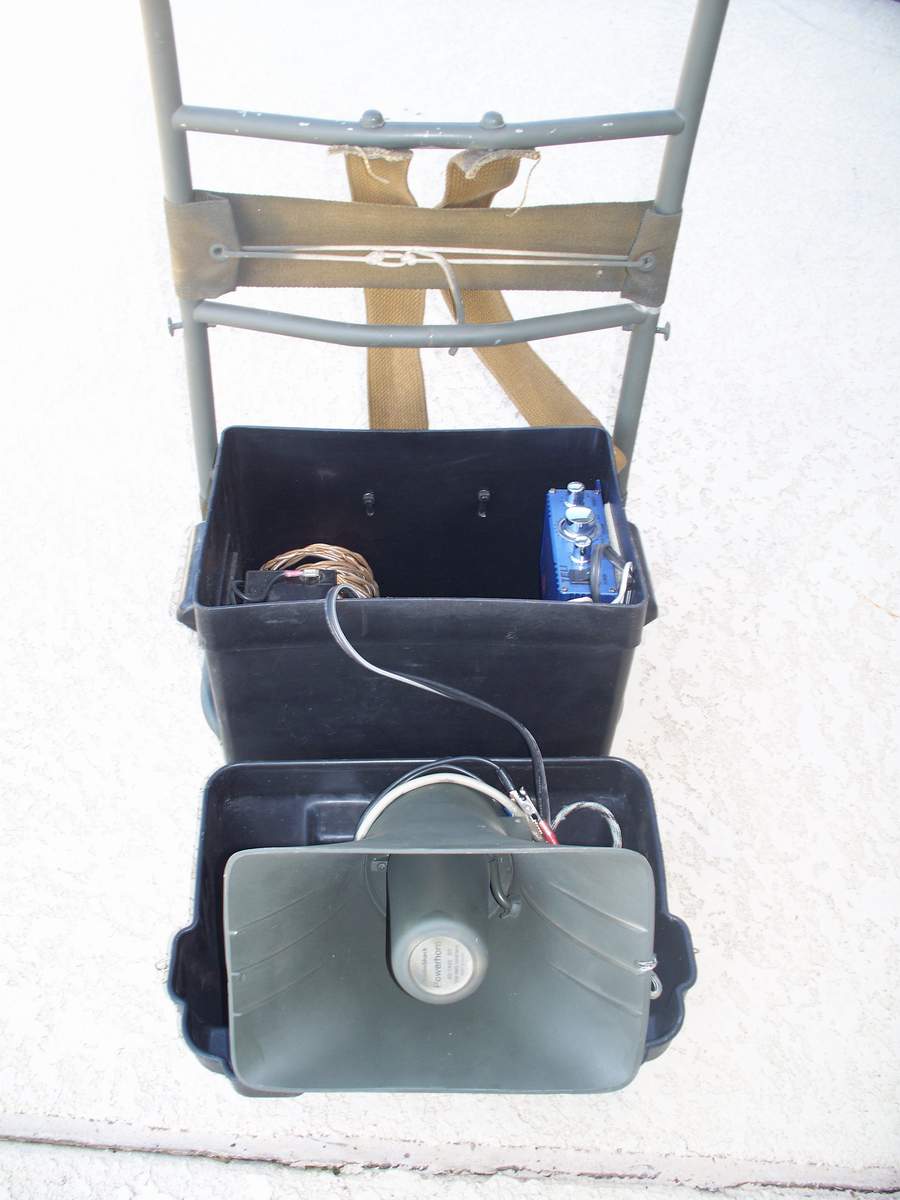
The unit makes use of a single Powerhorn speaker.
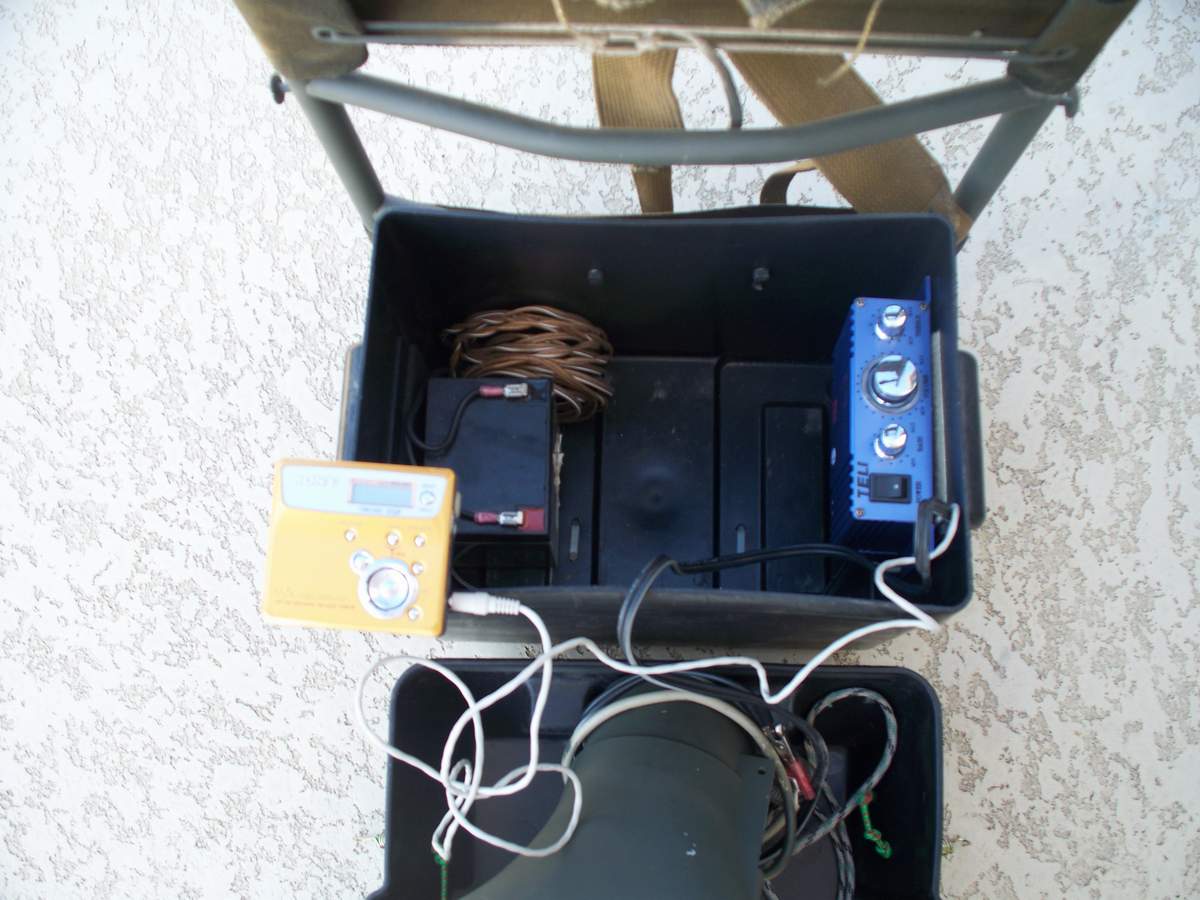
A motorcycle amp is powered by a 12 Volt 4.5 amp hour battery, sound files are provided by a Sony Minidisc player.
Photos
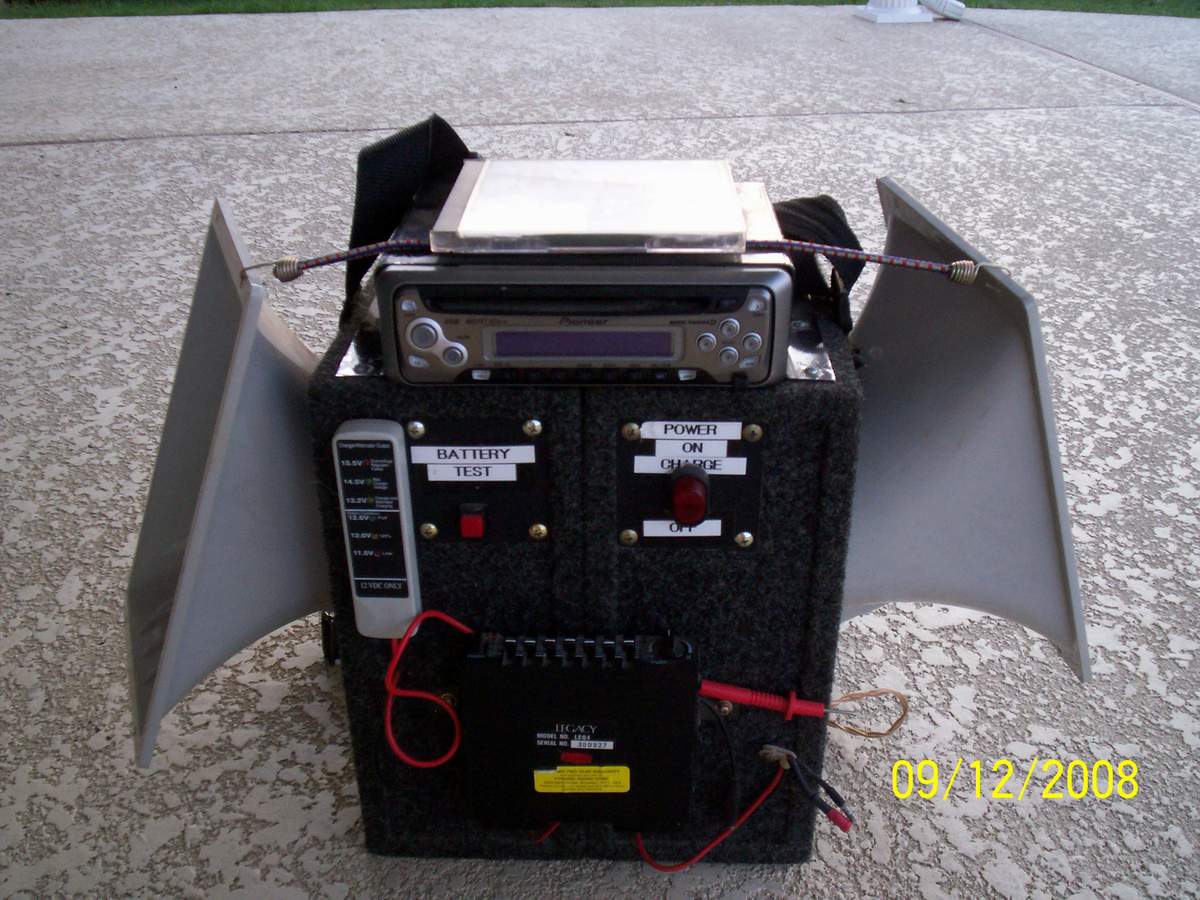
The call blaster, used in remote research areas.
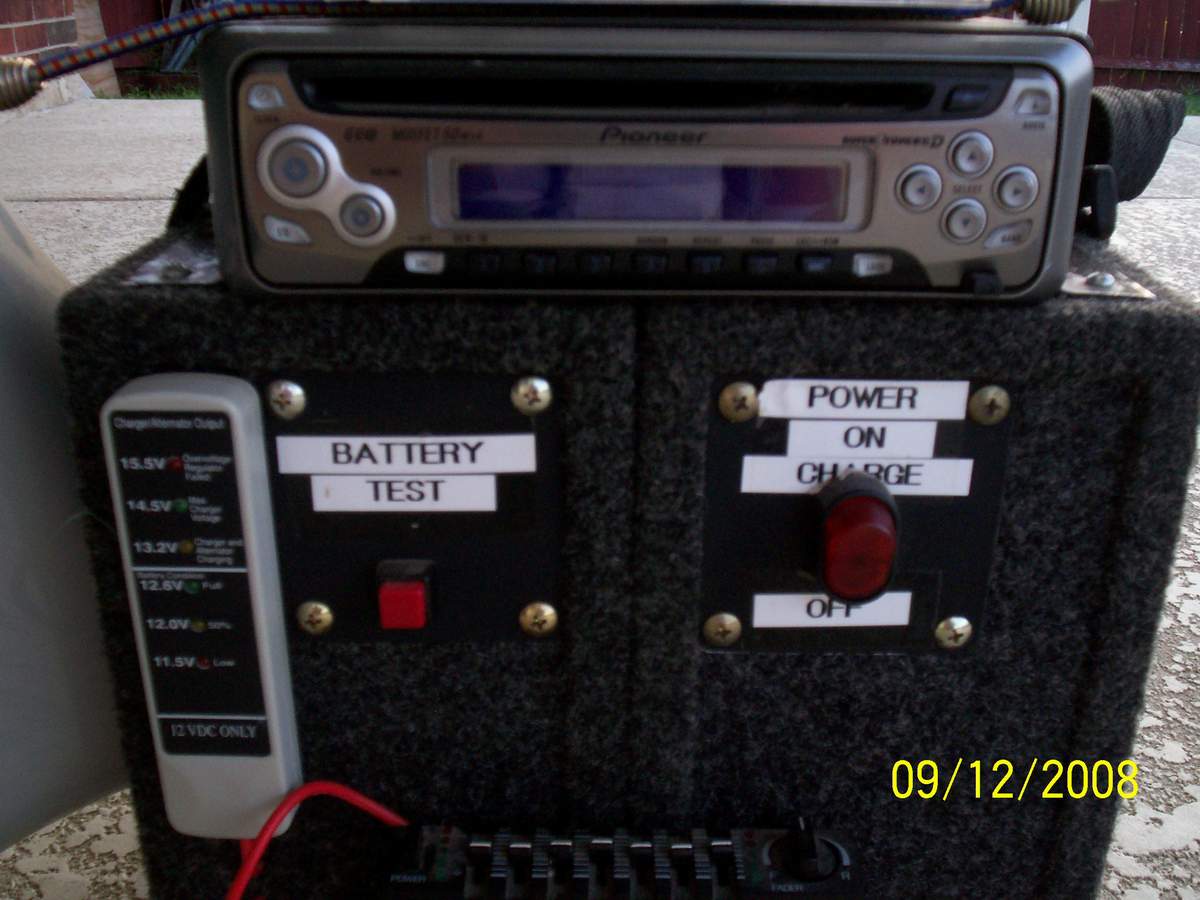
Close up of the front panel.
f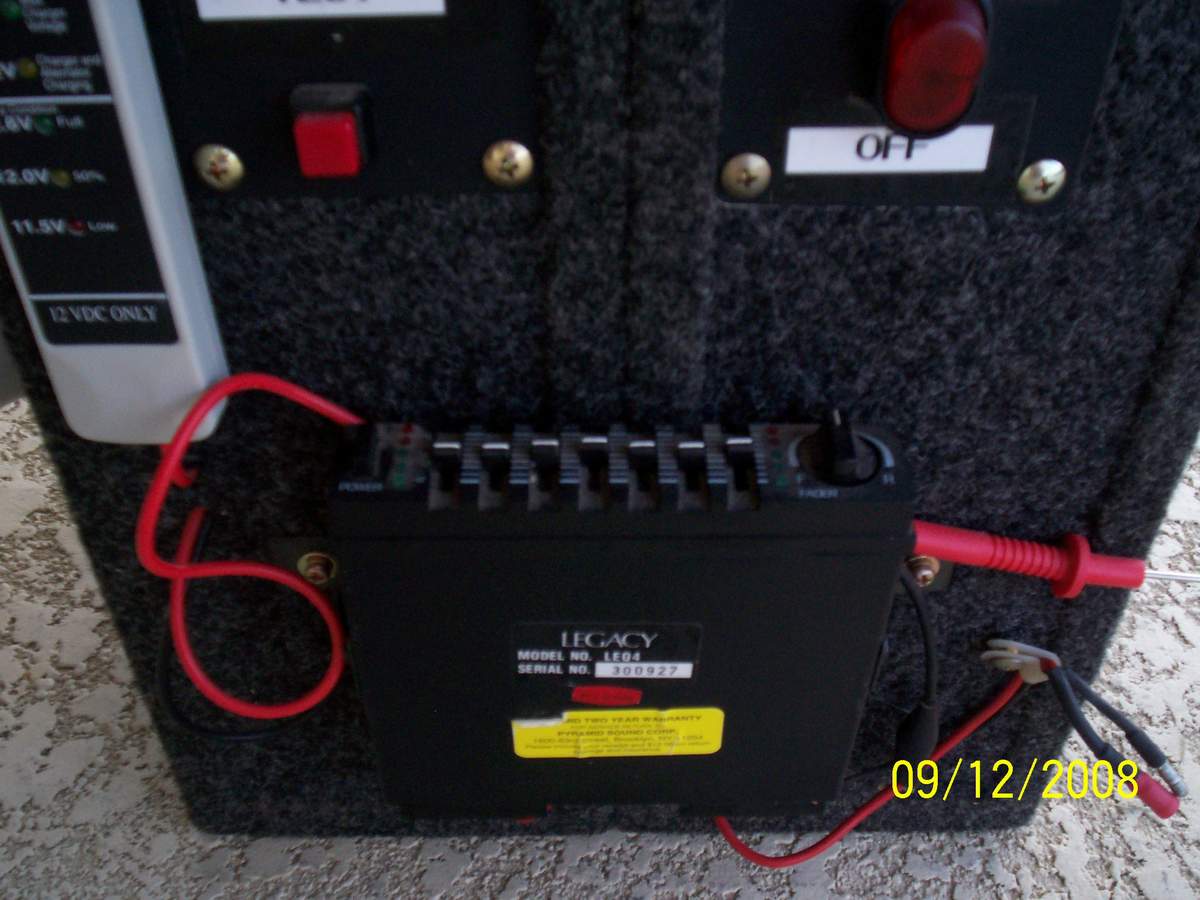
Another closeup showing the equalizer, allows us to optimize the blast frequencies if necessary.
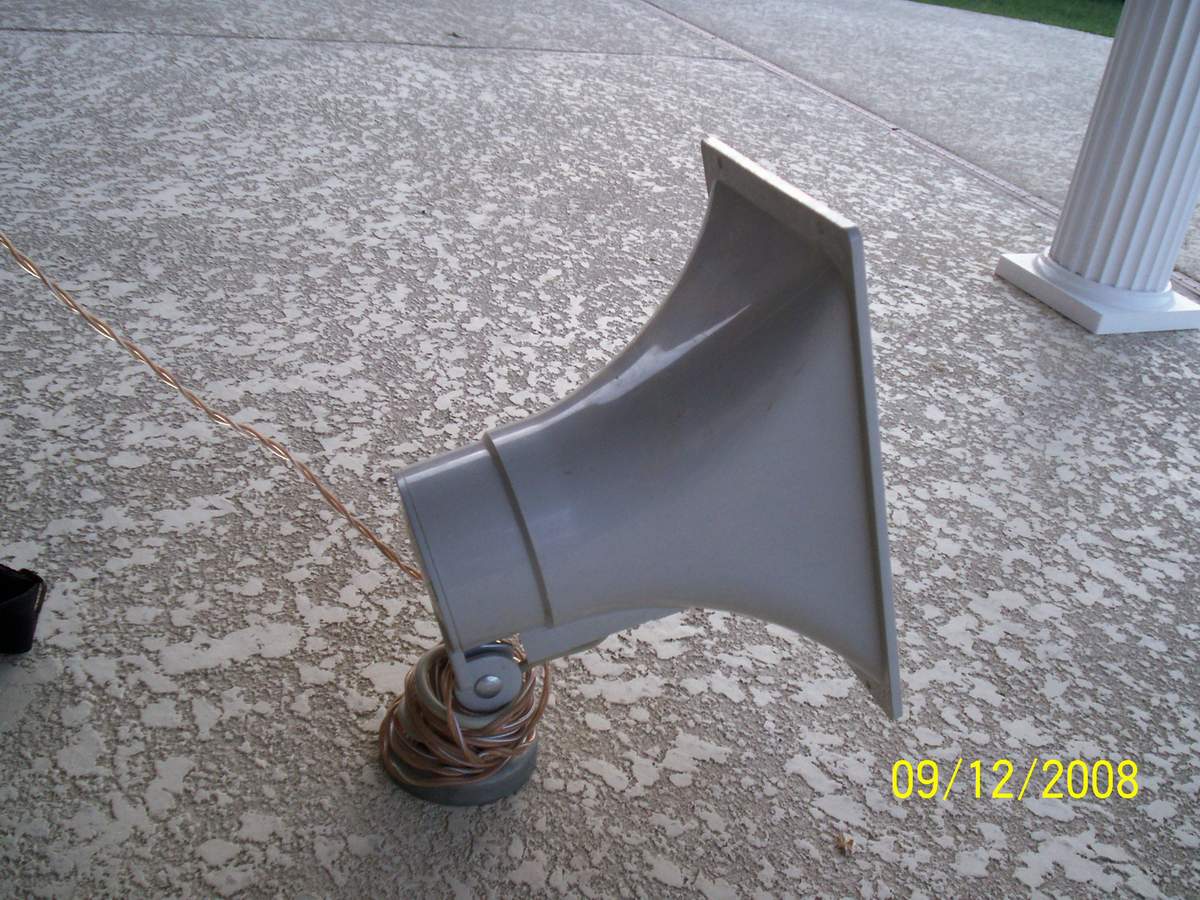
Powerhorns available at your local Radio Shack.
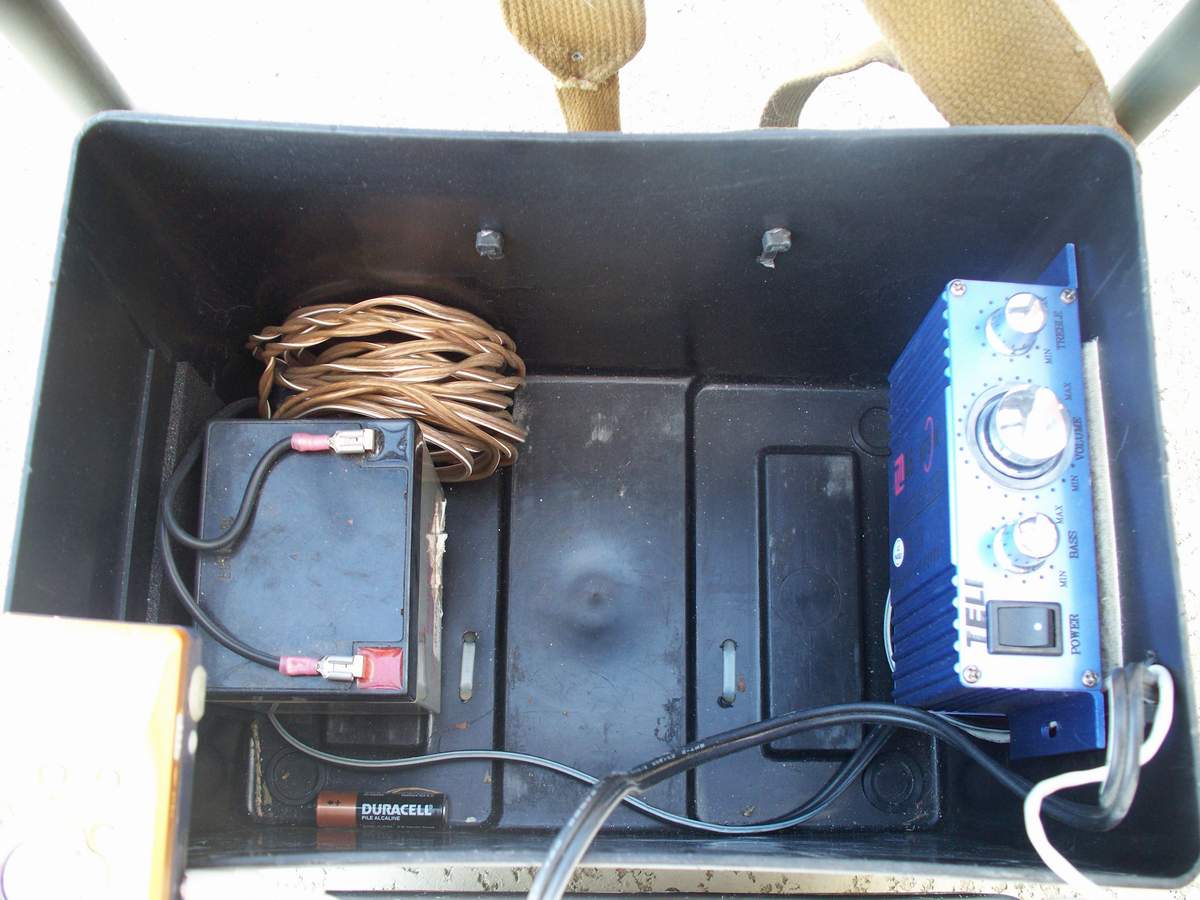
The motorcycle amp purchased off of Ebay pushes 180 Watts to the Powerhorn.